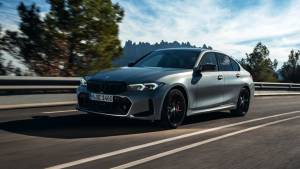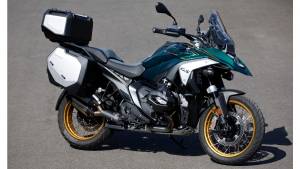Breaking: 2020 BMW M 1000 RR bookings for India to commence in this week
The BMW M division is known to make faster and more performance-oriented versions of their regular offerings. Needless to say, it is one of the most aspired names for driving enthusiasts. Their latest work is the new M3 and the M4, which have received a radical styling. The Munich based performance division has now brought its prowess in the world of two wheels, with the M 1000 RR. As clearly evident from the name and the pictures below, it is based on the flagship S 1000 RR but gets tons of tech, performance and features update. And yes, it is street legal. However, what has got us excited is that BMW Motorrad India will start accepting bookings for the M 1000 RR this week. While there's still some time before you get to see the M 1000 RR in flesh, here's everything to know about it.
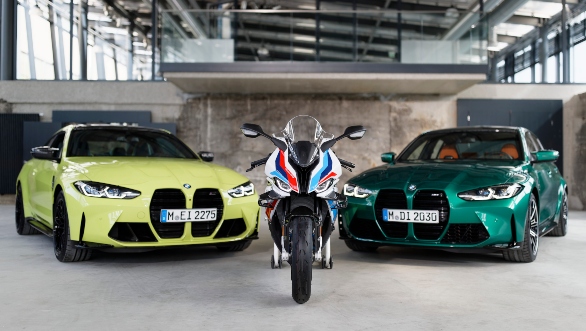 The 2020 BMW M 1000 RR posing with the latest iterations of the BMW M3 and M4
The 2020 BMW M 1000 RR posing with the latest iterations of the BMW M3 and M4
More poweRR
The BMW M 1000 RR is powered by a 999cc in-line four from the S 1000 RR but has been tweaked to make 5.4PS more. In comparison to the S 1000 RR, the engine's redline has been shifted from 14,500rpm to 15,100 rpm. While these numbers might not seem too much on paper, BMW mentions the M 1000 RR is more powerful than the S in the range from 6,000rpm to 15,100rpm, which will play a crucial role on a race track. While the peak torque rating of the motor has been left unchanged, the M 1000 RR comes with 46 teeth rear sprocket as compared to the 45 tooth design of the S 1000 RR, for even more impressive acceleration.
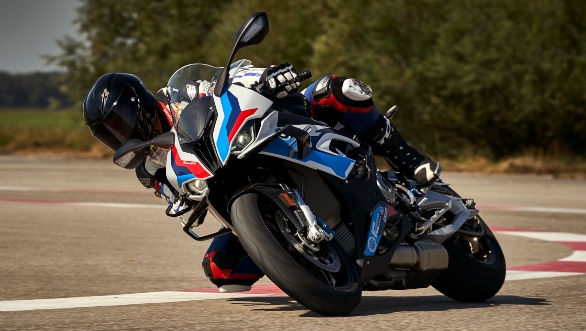
In terms of mechanicals, the intake ports have been updated with new geometry for better flow along with new 2-ring forged pistons. The length of the titanium con-rods have been increased by 2mm to curb the lateral load wherein the weight of each rod is just 85g. Further updates to the powertrain include adapted combustion chambers, compression increased to 13.5, slimmer and lighter rocker arms. The M 1000 RR also comes with a new Akrapovic titanium exhaust, which is lighter by an impressive 3.6kg as compared to the stock unit on the S. All these changes have made the M 1000 RR 0.2s faster to reach 100kmpg and 0.4s quicker to reach 200kmph. The importance of these numbers might not be realised in daily commute but can make a world of a difference on race tracks.
Comes with Wings to not fly
The M 1000 RR comes with fixed winglets, which is a first on a BMW Motorrad two-wheeler. BMW mentions that these fixed winglets help to keep the front end pinned to the ground even when in situations of hard acceleration. This helps the rider experience all that power without lifting the front wheel. The carbon fibre additions to the design help create as much as 13.4kg of downforce at speeds of 300kmph.
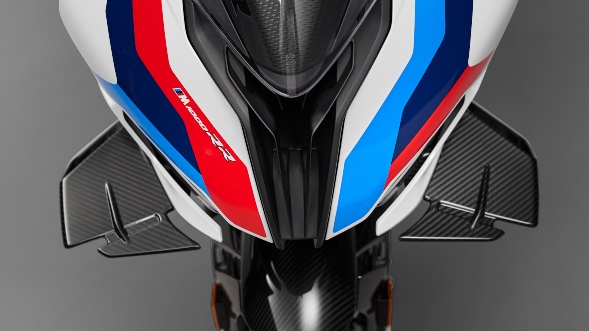
Further, the M RR comes with a taller screen for reduced wind resistance and also to compensate the additional drag due to the winglet design. During testing of the M 1000 RR, the motorcycle was up to 0.7s faster per lap as compared to the M RR without the winglets. Mentioning of performance, Markus Reiterberger, the BMW World Endurance rider was a mere 1.590s to 2.101s slower than BMW's Superbike riders on the WSB-spec machines, which is impressive as those machines are 15PS more powerful and are lighter by 15kg. BMW mentions, the effect of the winglets is also noticeable in curves and when braking, the downforce allows later braking and ensures increased cornering stability.
Framin' it
The BMW M 1000 RR is underpinned with the same aluminium chassis of the S 1000 RR, which could have been a conscious decision to keep the pricing under check and meet the WSBK price cap for such versions of track-spec motorcycles that are homologated for street use. The updated geometry includes a 3mm lower offset and 23.6-degree head angle. The wheelbase has been lengthened from 1,441mm to 1,457mm, which is a result of the longer swingarm. Further, the pivot position too can be altered unlike that on the S.
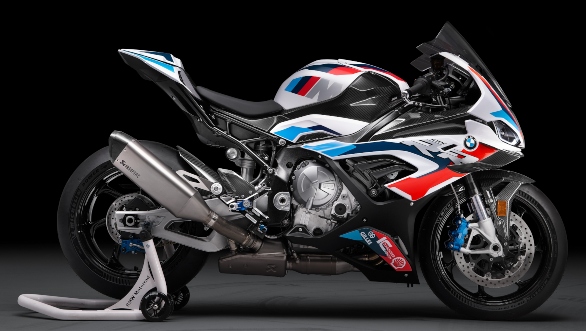
The rear suspension geometry has been revised as well which has increased the ride height by 6mm. The M RR is also lighter than the S by 5kg, which has been achieved by the lighter exhaust as mentioned above along with the new carbon rims that have helped the bike shed 1.7kg as compared to the aluminium rims. Doing braking duties are the M brakes by Nissin with thicker discs as compared to the S.
The M feel
The TFT instrumentation on the M 1000 RR is very much the same unit as that on the S, but what has changed is the BMW M animation. However, you can shell out a premium to get optional equipment such as an activation code (from the M competition package) can be used to provide comprehensive data material for the use of the M GPS lap trigger and M GPS data logger via the OBD interface of the instrument cluster.
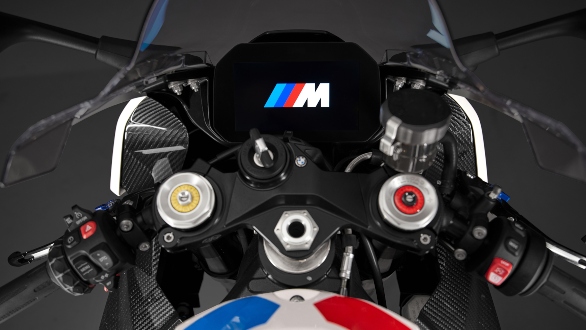
The M Competition package includes M milled parts package, the M carbon package as well as a silver 220 g lighter swinging arm, the friction-optimised, maintenance-free and DLC-coated M Endurance chain and the passenger package including the tail-hump cover.
Pricing
With all those updates, the BMW M 1000 RR will surely be a much premium offering as compared to the S 1000 RR. The pricing is said to be in the range of £30,935 which translates to close to Rs 29 lakh, sans the taxes and import duty, more than twice as compared to the S 1000 RR's international pricing. The S 1000 RR is priced at Rs 18.5 lakh, which makes us believe that BMW Motorrad could price the M 1000 RR at close to Rs 38.50 lakh, ex-showroom.
